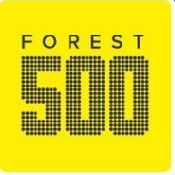New Initiative Tracks 500 Entities That Could End Tropical Deforestation
More and more countries and companies are promising to end deforestation by the year 2020, but which ones have the biggest impact, and what are these high-impact entities doing? That’s a question that one organization hopes to answer with a new web platform launching this month. The Global Canopy Programme’s Forest 500 aims to assess and rank the progress of government, investor, and company commitments to end deforestation by 2020.

11 February 2015 | 2014 was a year for zero-deforestation pledges. The New York Declaration on Forests brought governments, businesses, civil society and indigenous leaders together to cut forest loss in half by 2020 and end it completely by 2030. Then there is the Consumer Goods Forum’s resolutionto achieve zero-net deforestation by 2020. States within forested nations are making pledges of their own under the Rio Branco Declaration. Meanwhile NGOs have been making similar commitments for some time. In 2008, for instance, WWF initiated a campaign calling for zero net deforestation by 2020.
These pledges, however, mean nothing if they’¢re not made by entities big enough to actually make a difference and, obviously, they mean even less if the entities that make them don’t keep them.
This month, an initiative is launching to address each of these issues.
The Forest 500, is being launched today by the Global Canopy Programme (GCP), a tropical forest think tank focused primarily on natural capital. The Forest 500 ranks 500 “powerbrokers of zero deforestation with the potential to eliminate deforestation.
Who are the Forest 500?
The Forest 500 includes 50 jurisdictions, 250 companies, 150 investors and 50 other “powerbrokers (industry associations, development banks and so on). Together, they control the global supply chain of “forest risk commodities, the Forest 500 press release says.
“We are currently all part of a global deforestation economy,” says Mario Rautner, the GCP’s Drivers of Deforestation Programme Manager.“Deforestation is in our chocolate and our toothpaste, our animal feed and our textbooks, our buildings and our furniture, our investments and our pensions.
Palm oil, beef, pulp and paper and soybean are a few of these ‘forest risk commodities’, which have a trade value of almost USD $100 billion. They’re also the reason for two-thirds of the tropical deforestation happening.
The Forest 500 identifies who the 500 are and then assesses them based on their policies and impacts on forests. They’re identified based on a link to tropical deforestation through exposure to forest risk in their supply chains and also through their influence within the tropical deforestation sector. This could be in the form of rainforest conservation or agriculture development.
“Our goal with the Forest 500 is to provide precise and actionable information to measure the progress of society to achieve zero deforestation,says Rautner. “Together, these 500 countries, companies and investors have the power to clean up global supply chains and virtually put an end to tropical deforestation.
Identifying the Gaps
The Forest 500 assigns points to companies based on their policies, but only seven companies and four jurisdictions scored the maximum amount of points. Among companies, the seven highest-rated are Groupe Danone (France), Kao Corp. (Japan), Nestle S. A. (Switzerland), Procter & Gamble (US), Reckitt Benckiser Group (UK), Unilever (UK) and banking and financial services giant HSBC (UK). Among jurisdictions, Germany and the Netherlands scored the highest among countries importing forest risk commodities, while Brazil and Colombia were the highest among exporters.
But 30 countries, mostly in the Middle East and Asia-Pacific didn’t receive any points. Madagascar and Nigeria hold the lowest scores with India and China, two big importers of forest risk commodities, also received low scores.
As for the investors, none of them have zero or net zero deforestation commitments regarding forest risk commodities.
On the bright side, the analysis found that individual actors are making progress. Many consumer-facing businesses selling cosmetics and other home care products received high marks. And of course, money makes a difference. Companies surpassing $10 billion in revenue a year did better than those making below that. Being a publicly-listed company and having headquarters in North America also led to higher marks.
And while the sovereign wealth and hedge funds didn’t do very well from the investment and lending category, banks scored very high signaling that progress is possible in this sector.
Combining the good and bad news wrapped up in this report means the right steps-like building a more inclusive approach-must be taken in order to make a lasting long-term difference, Rautner says.
“Though the Forest 500 findings highlight that much work needs to be done, the good news is that a number of big players across sectors are demonstrating the leadership that is needed,” he says. “Putting policies in place is just the necessary first step in addressing tropical deforestation. Their implementation will be critical in order to transition to deforestation free supply chains by 2020.
Please see our Reprint Guidelines for details on republishing our articles.

